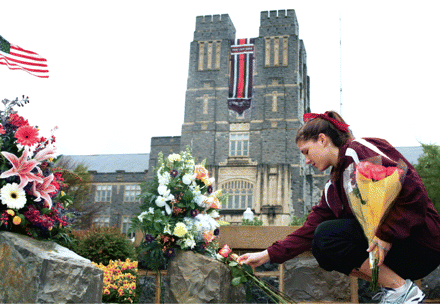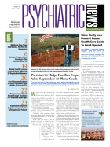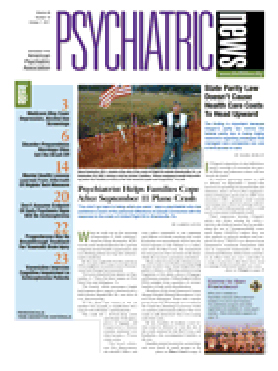The April 2007 shootings that left 32 people dead at the Virginia Polytechnic Institute and State University (Virginia Tech) left a complex pattern of posttraumatic stress symptoms that may offer clues to improving responses to a future campus disaster.
About 15 percent of 4,639 students sampled three or four months after the shooting reported posttraumatic stress disorder (PTSD) symptoms, a lower overall rate compared with other school shootings, said Michael Hughes, Ph.D., a professor of sociology at Virginia Tech, and colleagues in an article published online July 18 in Psychological Trauma. His coauthors included psychiatrist Robert Pynoos, M.D., M.P.H., a professor in the Department of Psychiatry and Biobehavioral Sciences at the University of California at Los Angeles, and psychiatric epidemiologist Ronald Kessler, Ph.D., a professor of health care policy at Harvard Medical School.
Students directly exposed to the shooting, however, made up only a small fraction of those with PTSD symptoms.
The primary factor explaining symptoms was the inability to confirm the safety of friends (30 percent), followed by the death of a (not close) friend (20 percent), and the death of a close friend (10 percent).
These "high-prevalence, low-impact stressors" call for a much broader approach to finding students in need of help afterward beyond the relatively small number of students directly exposed to trauma, said the researchers.
"Now, after such events campus officials will have to go beyond the usual outreach efforts, open forums, or faculty talks," agreed Jerald Kay, M.D., a professor and chair of psychiatry at Wright State University School of Medicine and coeditor of the book Mental Health Care in the College Community.
"They will have to inquire about not just exposure but whether the student was worried about a friend's safety," said Kay in an interview with Psychiatric News. He was not involved in the Virginia Tech research.
The killings, committed by a 23-year-old student, Seung-Hui Cho, took place in two waves. He shot and killed two students in a dorm, then left there and went to Norris Hall, a classroom building, where he killed 30 students and faculty members and wounded 17 others.
Two hours elapsed between the two incidents. During that time, the university administration sent out an e-mail alerting students to the dorm shootings. A later e-mail reported that a "gunman was on the loose" and that many campus buildings were locked down.
The lockdown continued for several more hours, and many students could watch the hunt for the killer (who by then had committed suicide) on television sets.
The researchers sent out the Internet-delivered survey during the summer following the shooting incident to all 23,214 students registered for the spring semester and received 4,369 replies. They attributed the low (20 percent) response rate largely to so many students being away on summer break.
"We did a nonresponse survey, and we used the results to create weights to adjust for nonresponse bias," Hughes told Psychiatric News. "The weights did not change the data much."
Nearly all (98 percent) of the survey respondents said they were aware of the Norris Hall shootings soon after they happened. However, few respondents were near the two incidents as they occurred: 4.6 percent at the dorm and 9.1 percent at Norris Hall.
Students with PTSD symptoms were not a small, obvious group with direct exposure to death and injury, but were widely scattered around the campus, the researchers found, using the Trauma Screening Questionnaire.
"Most cases of high levels of posttraumatic stress symptoms were associated with loss of a nonclose friend or acquaintance and short-term uncertainty about the safety of a close friend," the researchers pointed out.
Were a similar event to occur today, the role of electronic networks would be even stronger, said Kay. "Social media is an extraordinarily potent characteristic of their age group," he noted. "They're tuned in all the time."
Campus administrators will have to develop ways of improving access to social media during emergencies, Kay added.
However, that may only complicate students' attempts to find out what's happening with their friends. Part of the reason Virginia Tech students had trouble contacting friends during the 2007 incident was flooded communication networks, including cell phones, said Hughes.
"That problem will not be solved by Facebook, Twitter, and so on," he said.


